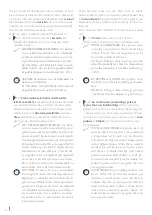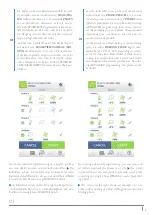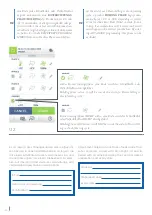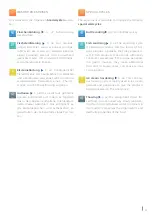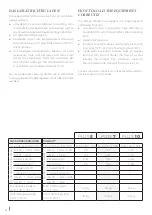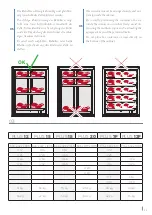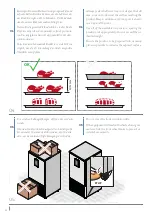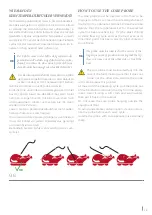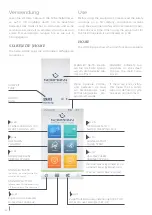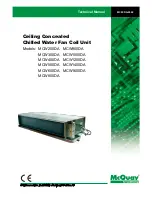
13
anmerKungen zur entSorgung
Die beste Lösung ist die Rückgewinnung
und Wiederverwertung des Produkts. Wenn
dies nicht möglich ist, muss die Vernichtung
in einer zugelassenen Anlage erfolgen, die
so ausgerüstet ist, dass sie saure Gase und
andere toxische Verarbeitungsprodukte ab-
sorbieren und neutralisieren kann.
maSSnahmen bei
unbeabSichtigter VerSchüttung
Achten Sie auf einen angemessenen per-
sönlichen Schutz (unter Verwendung von
Atemschutzgeräten), wenn Sie verschüttete
Flüssigkeiten entsorgen.
Wenn die Bedingungen ausreichend sicher
sind, isolieren Sie die Quelle der Verschüttung.
Bei kleinen Verschüttungen, das Material bei
ausreichender Belüftung verdunsten lassen.
Erhebliche Verschüttung:
■
den Bereich belüften;
■
verschüttetes Material mit Sand oder ei-
nem anderen geeigneten absorbieren-
den Material eindämmen;
■
verhindern, dass die Flüssigkeit in Abflüsse,
Abwasserkanäle, Keller und Arbeitsgruben
gelangt, da die Dämpfe eine erstickende
Atmosphäre schaffen können.
handhabung
Vermeiden Sie das Einatmen hoher Dam-
pfkonzentrationen. Atmosphärische Kon-
zentrationen müssen auf ein Minimum re-
duziert und so niedrig gehalten werden, wie
dies vernünftigerweise unter dem Arbeit-
splatzgrenzwert erreichbar ist. Dämpfe sind
schwerer als Luft, und daher können in Bo-
dennähe, wo die allgemeine Belüftung sch-
lecht ist, hohe Konzentrationen auftreten.
Sorgen Sie in solchen Fällen für ausreichen-
de Belüftung oder tragen Sie ein geeigne-
tes Atemschutzgerät mit Luftzufuhr. Vermei-
den Sie den Kontakt mit offenem Feuer und
heißen Oberflächen, da sich reizende und
toxische Zersetzungsprodukte bilden könn-
en. Vermeiden Sie den Kontakt zwischen
Flüssigkeit und Augen/Haut.
Der Hersteller behält sich das Recht vor, jederzeit und ohne vorherige
Ankündigung Verbesserungen an den Geräten oder Zubehörteilen vor-
zunehmen. Die vollständige oder teilweise Vervielfältigung dieses Hand-
buchs ist ohne Zustimmung des Herstellers verboten. Die angegebenen
Messwerte sind indikativ und nicht verbindlich. Im Falle von Streitigkei-
ten ist die Originalsprache des Handbuchs Italienisch. Der Hersteller ist
nicht verantwortlich für Übersetzungs-/Dolmetschfehler.
diSpoSal information
The best solution is to recover and recycle
the product. If this is not possible, de-
struction must take place in an authorised
system equipped to absorb and neutralise
acid gases and other toxic processing pro-
ducts.
meaSureS in caSe of accidental
Spillage
Ensure adequate personal protection (for
the nose and mouth) during the elimina-
tion of spills.
If conditions are sufficiently safe, isolate
the source of the leak. For small spills, al-
low the material to evaporate, on condi-
tion that there is adequate ventilation.
For large leaks:
■
ventilate the area;
■
limit the material spilled using sand or
another suitable absorbent material;
■
prevent liquid from entering drains,
sewers, basements and work pits, be-
cause the vapours may create a suffoca-
ting atmosphere.
handling
Avoid the inhalation of high concentra-
tions of vapours. Atmospheric concentra-
tions must be kept to a minimum as far as
is reasonably possible, below the occupa-
tional exposure limit. The vapours are hea-
vier than air, therefore high concentrations
may form near the ground where general
ventilation is poor. In these cases, ensure
adequate ventilation or wear suitable re-
spiratory protective devices with an air
supply. Avoid contact with naked flames
and hot surfaces, as irritating and toxic
decomposition products may form. Avoid
contact between liquid and the eyes/skin.
The manufacturer reserves the right to make improvements to the
equipment or accessories at any time without prior notice. Full or
partial reproduction of this manual is forbidden without the man-
ufacturer’s consent. The measurements provided are indicative and
not binding. In the event of any disputes, the original manual lan-
guage is Italian. The manufacturer shall not be liable for any transla-
tion/ interpretation errors.
Summary of Contents for nortech 433 Series
Page 1: ...COOKING AND CHILLING A UNIQUE EXPERIENCE Verwendung und Wartung Use and maintenance...
Page 15: ...15...
Page 27: ...27 SONDERZYKLEN SPECIAL CYCLES...
Page 28: ...28 Schnellk hlen und Tiefk hlen blast chilling and shock freezing...
Page 39: ...39 SCHNELLK HLUNG TIEFK HLUNG PERS NLICHE ANMERKUNGEN BLAST CHILLING SHOCK FREEZING NOTES...
Page 42: ...42 AUFTAUEN THAWING...
Page 46: ...46 SONDERZYKLEN SPECIAL CYCLES...
Page 53: ...53 SONDERZYKLEN SPECIAL CYCLES...
Page 56: ...56 Zellen ZYKLEN Zellen ZYKLEN CABINET CYCLES...
Page 60: ...37...
Page 61: ...61...
Page 67: ...67 PERS NLICHE ANMERKUNGEN NOTES...
Page 74: ...74...
Page 75: ...75...


















